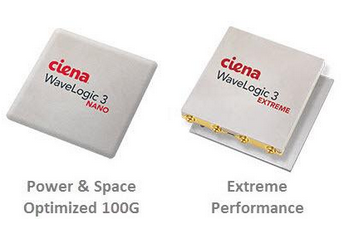
Broadcom has begun sampling the next-generation of its StrataXGS Trident Ethernet switching silicon, which has been optimized to meet the bandwidth, scalability and efficiency demands of 10GbE virtualized data centers. The new silicon offers 1.28 terabit per second (Tbps) switching performance, 30 percent lower power and double the performance for data center virtualization overlays, such as VXLAN.

The 28 nanometer (nm) Trident-II+ Series, which provides a drop-in power and efficiency improvement over the previous version, brings a number of features for network virtualization, including single-pass VXLAN routing that doubles gateway performance in all network topologies, as well as support for pre-standard GENEVE overlays.

As a complement to Broadcom's latest StrataXGS Tomahawk and StrataDNX switch SoCs, the Trident II+ Series provides 100GbE connections to the spine layer and between racks, while supporting 10GbE connections to the servers in enterprise and private cloud deployments.
StrataXGS Trident-II+ (BCM56860) Series Key Features
- Standards-compliant high-density 10GbE/40GbE/100GbE switch SoC
- Single-pass routing in/out of tunnels (RIOT) at 1.28 Tbps
- High-performance tunneling support for VXLAN, NVGRE, MPLS, SPB, and pre-standard Geneve
- 128 low-power optimized 10Gbps serial interfaces with up to 8 ports of 100GbE
- Broadview instrumentation featuring buffer statistics tracking (BST) and flex counters
- Enhanced ContentAware engines with 4x larger ACL rule databases versus previous generation devices
- OpenFlow 1.3.1+ support scaling to several 10,000's of flows using OF-DPA and third-party controllers
- Configurable SmartTable technology to maximize L2 MAC,L3 Host, LPM forwarding database capacities
- Full IPv4 and IPv6 unicast and multicast routing support
- Integrated SmartBuffer for optimal burst absorption, dynamic thresholding and lossless service
- SmartHash flexible engine featuring highly scalable ECMP load balancing and network resiliency
- FlexPort technology enables dynamically configurable ports/MACs
- Ethernet Port Multiplier technology supports fine-grained channelization over Ethernet and enterprise fabrics
"Over the past five years, multiple StrataXGS Trident generations have helped drive the adoption of 10GbE in cloud and mega scale data centers with standard, cost-efficient, merchant silicon based platforms," said Ram Velaga, Broadcom Senior Vice President & General Manager, Network Switch. "Our latest Trident-II+ series offers the economics, performance and virtualization capabilities required to lead a similar transition across enterprise data centers worldwide."
"The collaboration between Broadcom and VMware to define and build robust underlay-overlay technologies allows customers today to deploy fully virtualized networks for greater operational efficiency," said Hatem Naguib, vice president, Networking and Security at VMware. "Mainstream enterprises using our VMware NSX™ network virtualization platform on top of a StrataXGS Trident-II+ based physical network get first-class VXLAN support as well as future support for Geneve - enabling efficient, secure and agile data center networks."
http://www.broadcom.com/press/release.php?id=s907324
 Derek Peterson, CTO of Boingo Networks, discussed his company's evolution to a S.M.A.R.T. infrastructure powered by NFV. The acronym stands for Secure, Multiplatform, Analytics-driven, Responsive and Tiered.
Derek Peterson, CTO of Boingo Networks, discussed his company's evolution to a S.M.A.R.T. infrastructure powered by NFV. The acronym stands for Secure, Multiplatform, Analytics-driven, Responsive and Tiered. 
















